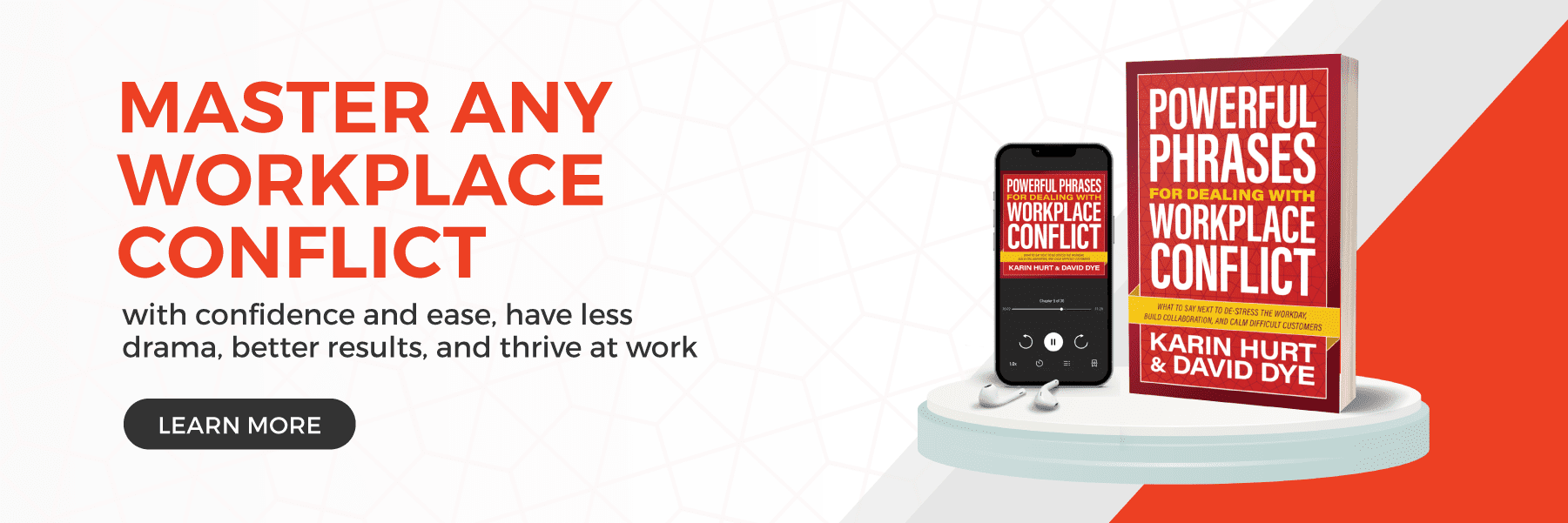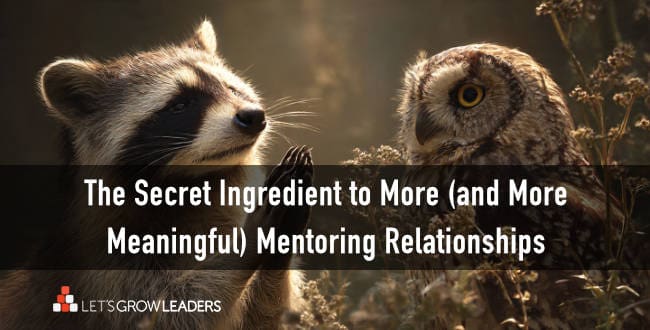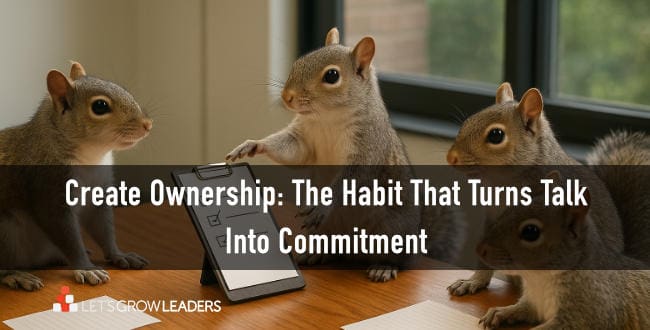Want to Reduce Unwanted Team Conflict,
Make it Easier to Talk About Team Accountability
When team members don’t get along, one of the biggest sources of conflict is a lack of team accountability.
And, when you look at the research about high-performing teams, one common characteristic is that team accountability isn’t just the manager’s job – the team holds one another accountable (and their manager too). When you talk to high-performing teams, it’s easy to see that this team accountability doesn’t just happen. They work at it. They talk about it. And, they have the tools to address it when things break down.
If you’ve read our first book, Winning Well, or attended one of our foundational leadership development programs, you’ve likely encountered our INSPIRE method for accountability conversations. (If you’re interested in how to use INSPIRE for performance feedback conversations, start here).
The INSPIRE Method can also be used as a practical way to address accountability issues with anyone you work with.
As we teach in our conflict and collaboration courses, an effective conflict conversation includes connection, curiosity, and commitment. The INSPIRE method is a way to guide your conversation through these stages.
How to INSPIRE Better Team Accountability

Connection
Begin with connecting to the person and to the topic you want to discuss by I – Initiating the Conversation, N -Noticing a behavior, and S – providing Supporting examples.
I – Initiating the conversation respectfully and stating your intention
In this first stage, you connect and clarify. This could be something as simple as “My intent for our conversation is to make sure we can get this project done with minimal disruptions to both of our teams.” or “I’d like to talk about how we can take less time to get our reports done accurately. Is this a convenient time?”
Or, if you have a more sensitive or serious conversation in mind, you may say something like, “I really care about this project and our working relationship. We’re behind on our commitments and I have some ideas that can help. Do you have some time later today to talk?”
Then you N – Notice and share your observation.
This is where you start with your experience of the situation. Keep the focus on what you have observed, not what you think their behavior means. We’re very deliberate in using the word “notice” because you can notice a behavior, but you can’t notice an attitude.
For example, you wouldn’t want to tell your coworker, “I noticed that you’re lazy.” Instead, focus on observable behaviors. For example, “I’ve noticed that I don’t have the report you said I’d get at nine this morning.”
You can help your team think about observable behaviors by asking them to imagine watching a video of what happened and narrating the action. Describe the activity (or its absence) in the imaginary video. Those are observable behaviors.
And the final step of the CONNECT stage is S – Support, where you provide supporting evidence.
For example, “I’ve noticed you’ve been joining our meetings late. Today’s Zoom meeting started at 8 and you joined at 8:15. Yesterday’s staff meeting started at 4:00 and you joined at 4:20.”
Connecting well makes all the difference when holding a team accountability conversation with a colleague.
Curiosity
The real magic of the INSPIRE method comes in the CURIOSITY stage. This is where you ask open-ended questions to encourage them to reflect on what’s happening.
When you P – Probe It could be something as simple as, “What’s going on?” Or, “How does this look from your perspective?” The key to this step is to ask with genuine curiosity. There may be an excellent reason for what happened. You don’t want to assume a character flaw or ill intent.
Then, in the I -Invite stage, you ask them to come up with ideas to address the situation. “How do you think we can get the data from your group on time?” Or, “What do you think you can do to ensure you can be at our meetings on time?”
Commitment
And the final stage of the INSPIRE process is COMMITMENT.
This stage starts with R – Review. Here’s where you recap their commitment. This is a check for understanding. “Great, so what I hear you’ll do is talk to the developers and let them know you have to finish this project before going full force on that one?” Or, “So, you’re going to see if you can eliminate some meetings from your calendar, so you’re not always running back to back (and late).”
Finally, encourage your team to E – Enforce. This is where they schedule a follow-up to discuss their new commitment. “So we have two more cycles on this project this month. Can we schedule time on the 30th at 3 pm to talk about how we’re doing?”
The INSPIRE Method Provides a Framework for Connection, Curiosity, and Commitment
The INSPIRE Method gives you a natural opportunity to use some core power phrases as well.
For example, in the Connection Phase, you could say.
“I care about _____ (you, this team, this project) and I’m confident we can find a solution that we can all work with.”
or to connect first to their emotion
“It sounds like you’re feeling _____ is that right? [pause for affirmation]. Thank you for letting me know how you feel.” Here’s how I’m feeling. I’ve noticed…”
Or in the Curiosity phase, you might say
“What would success look like for you?”
And then in the Commitment phase, you might close with,
“So, to recap our conversation, we’ve agreed to _________. Is that your understanding?”
And, ” Let’s schedule some time to talk about this again, and see how our solution is working,”
The INSPIRE method is a proven method for making team accountability natural and helps to prevent conflicts from escalating.
For more important team accountability conversations see…
How to Build a High-Performing Team: Ten Vital Conversations








0 Comments